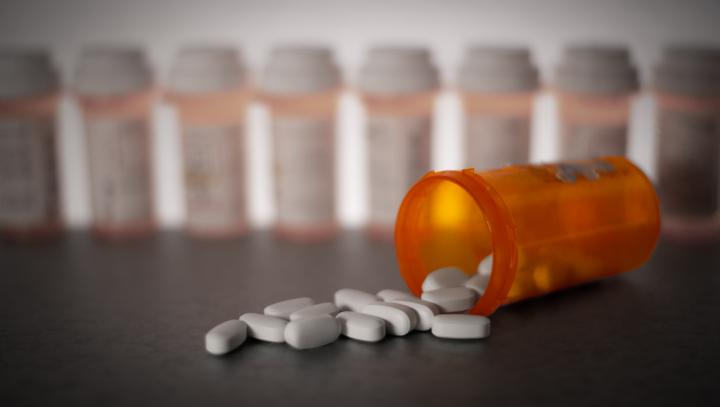Penn study of robotic urologic surgery patients points to key step in overcoming opioid crisis

Credit: Penn Medicine
PHILADELPHIA – A specialized pain management program for patients who underwent robotic surgery for urologic cancers resulted in just eight percent going home with narcotics after discharge, compared to 100 percent who would have received them without this enhanced recovery protocol. What’s more, the group of patients who did receive narcotics went home with fewer pills than they would have under regular guidelines. Researchers in the Perelman School of Medicine at the University of Pennsylvania will present their findings at the 2019 American Society of Clinical Oncology Annual Meeting in Chicago (Abstract #6502).
“The key to our program was to start patients with over the counter medications, then escalate them as needed. This means patients whose pain can be managed without opioids never end up getting them in the first place, while patients whose pain warrants these prescriptions receive them when needed,” said lead author Ruchika Talwar, MD, a resident in Urology. Thomas J. Guzzo, MD, MPH, chief of Urology, is the study’s senior author.
Cancer patients are particularly susceptible to opioid addiction, with recent studies showing they are 10 times more likely to die from an opioid overdose than the general public. About six percent of cancer patients who use opioids for the first time to manage pain after a surgery become addicted.
This study specifically looked at robotic urological procedures, including radical prostatectomy to remove the prostate and both radical nephrectomy and partial nephrectomy to remove or partially remove the kidney. In all of these cases, guidelines indicate sending patients home with varying amounts of oxycodone – between 15 and 45 pills.
In September of 2018, Penn researchers began a new program that started patients without narcotics and escalated only if needed. Patients received gabapentin and acetaminophen before surgery, then received the drugs again every eight hours after surgery, along with an IV dose of ketorolac. If they were still in pain, patients received tramadol. Only after all of that were they escalated to oxycodone for their pain. If pain still continued, they were prescribed 10 oxycodone pills only.
Out of 170 patients between September 2018 and January 2019, 115 (68 percent) were discharged without prescriptions for opioids. Another 41 (24 percent) went home with 10 pills of the nonnarcotic, tramadol. Just 14 (8 percent) were prescribed 10 pills of oxycodone. The study also compared pain scores among patients, and there was no difference among the three groups despite patients receiving different medications. Talwar says this shows the pain management technique was effective while still recognizing what each patient requires.
“There have been calls to go opioid-free, but some patients do need them, and our data indicate that among our patients, everyone’s pain was controlled after surgery,” Talwar said. “We managed to achieve that while still seeing an overwhelming reduction in the amount of opioids we prescribed.”
Talwar says this reduction helps more than just the patients, since there are fewer pills in the home and thus fewer pills moving through the community. Researchers also point out that while this model is specific to Penn patients, the principle is generalizable.
“Every practice is different, and so our next goal is to test this approach in a multi-institutional study, but we felt it was important to share our success to start the conversation about how other centers may want to implement something like this,” Guzzo said.
###
Talwar will present the findings in an oral abstract on Friday, May 31st at 3:09 p.m. central in McCormick Place room 102.
Penn Medicine is one of the world’s leading academic medical centers, dedicated to the related missions of medical education, biomedical research, and excellence in patient care. Penn Medicine consists of the Raymond and Ruth Perelman School of Medicine at the University of Pennsylvania (founded in 1765 as the nation’s first medical school) and the University of Pennsylvania Health System, which together form a $7.8 billion enterprise.
The Perelman School of Medicine has been ranked among the top medical schools in the United States for more than 20 years, according to U.S. News & World Report’s survey of research-oriented medical schools. The School is consistently among the nation’s top recipients of funding from the National Institutes of Health, with $425 million awarded in the 2018 fiscal year.
The University of Pennsylvania Health System’s patient care facilities include: the Hospital of the University of Pennsylvania and Penn Presbyterian Medical Center–which are recognized as one of the nation’s top “Honor Roll” hospitals by U.S. News & World Report–Chester County Hospital; Lancaster General Health; Penn Medicine Princeton Health; and Pennsylvania Hospital, the nation’s first hospital, founded in 1751. Additional facilities and enterprises include Good Shepherd Penn Partners, Penn Home Care and Hospice Services, Lancaster Behavioral Health Hospital, and Princeton House Behavioral Health, among others.
Penn Medicine is powered by a talented and dedicated workforce of more than 40,000 people. The organization also has alliances with top community health systems across both Southeastern Pennsylvania and Southern New Jersey, creating more options for patients no matter where they live.
Penn Medicine is committed to improving lives and health through a variety of community-based programs and activities. In fiscal year 2018, Penn Medicine provided more than $525 million to benefit our community.
Media Contact
John Infanti
[email protected]




